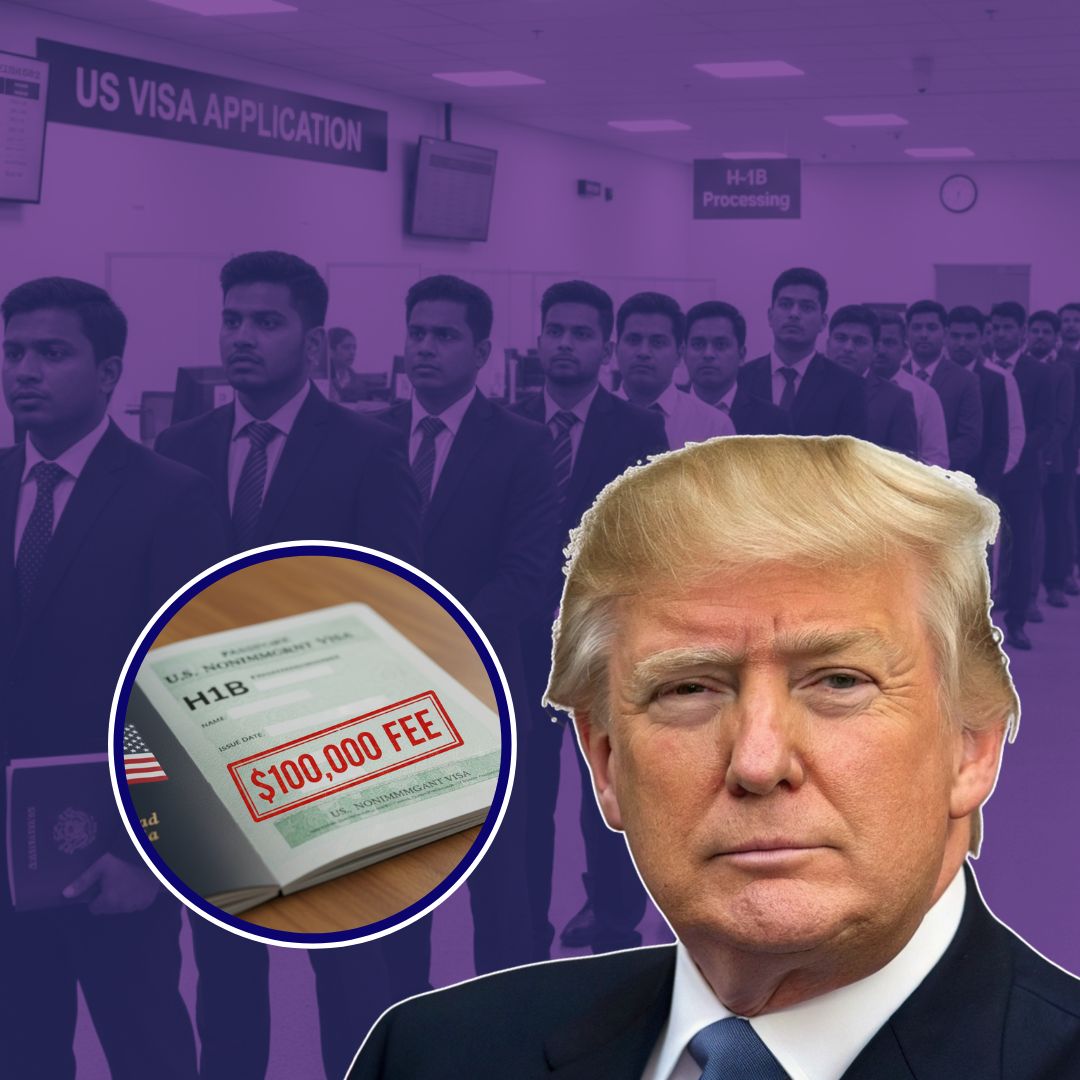US President Donald Trump has introduced a $100,000 one-time fee for all new H-1B visa applications filed after September 21, 2025. This visa programme caters to skilled foreign workers, especially from India, who take specialized roles in the US workforce.
The fee aims to curb abuses of the visa system and prioritise American job protection. Officials have clarified that the fee does not apply to existing visa holders or renewals and is not an annual charge.
The announcement has triggered concerns among Indian professionals, tech companies, and trade bodies, highlighting potential disruptions to families and the US tech sector.
Details Behind the Fee and Official Clarifications
The executive order signed on September 19, 2025, marks a significant change in US immigration policy regarding H-1B visas. Initially, contradictory reports suggested that the visa fee might be an annual charge running up to $600,000 over six years.
However, White House spokesperson Karoline Leavitt confirmed on social media that it is a one-time fee applicable only to new petitions. The US Citizenship and Immigration Services (USCIS) and Customs and Border Protection (CBP) have issued formal guidelines reinforcing that only petitions filed after September 21 will attract the fee. Current H-1B holders, even if they travel abroad, will not be required to pay the fee to re-enter the US.
In addition to the direct financial impact on employers and workers, the new $100,000 fee is expected to disproportionately affect smaller tech companies and startups in the US, which often rely heavily on H-1B talent to drive innovation and maintain competitive edge.
Analysts warn this could stifle emerging companies’ growth and reduce the global flow of highly skilled individuals. Moreover, the White House accused some US companies of replacing American tech workers with cheaper foreign labour via the H-1B programme, citing cases where significant American layoffs coincided with large inflows of H-1B workers.
This move, therefore, also reflects broader efforts to address economic and national security concerns related to workforce composition. While there may be short-term gains from the fee, experts caution about long-term risks to US innovation and competitiveness if access to global talent is curtailed.
Under the Presidential Proclamation signed by President Trump on September 19, 2025, entry into the United States of nonimmigrant workers seeking H-1B specialty occupation visas is restricted unless their petitions are accompanied by a $100,000 fee.
This restriction will last 12 months unless extended and aims to curb abuse and protect American workers, with exceptions and implementation guided by the Departments of Homeland Security and State.
Historical Context and Stakeholder Reactions
Created in 1990, the H-1B programme enables US companies to employ foreign nationals in specialty occupations such as technology, engineering, and science. Indians comprise over 70% of all H-1B visa holders, reflecting the programme’s critical role in the US tech ecosystem.
Trump’s administration argues the programme has been exploited to undercut American workers and has sought to reduce dependency on foreign labour through fees and other restrictions. Indian IT industry bodies, including Nasscom, warn that the hefty fee could have humanitarian consequences by disrupting families dependent on visa holders.
Tech giants such as Amazon, Microsoft, and Google, major employers of H-1B workers, are facing increased operational costs and are advising their visa-holding employees to consider their travel plans carefully. Analysts also caution that the fee may prompt US companies to shift jobs offshore, potentially undermining the American economy
The Logical Indian’s Perspective
The Logical Indian acknowledges the sovereign right of countries to protect their labour markets but emphasises that immigration and labour reforms must be pursued with empathy and an eye on long-term social and economic harmony. Skilled migrants form a vital bridge fostering not only innovation and growth but also cross-cultural understanding and cooperation.
Abrupt policy changes that impose excessive burdens risk fracturing families and communities and could hamper the spirit of collaboration that benefits all stakeholders. There is a need for balanced immigration reforms that safeguard local interests without alienating global talent.
.@POTUS signs a Proclamation to restrict the entry of certain H-1B aliens into the U.S. as nonimmigrant workers, requiring a $100,000 payment to accompany or supplement H-1B petitions for new applications.
— Rapid Response 47 (@RapidResponse47) September 19, 2025
AMERICA FIRST! pic.twitter.com/AzAUJzXawV
President Trump’s new H-1B visa requirement applies only to NEW, prospective petitions that have not yet been filed. ⁰⁰Petitions submitted prior to September 21, 2025 are not affected.https://t.co/YZmqtpE8N3 pic.twitter.com/ZwCnqeoLVI
— USCIS (@USCIS) September 20, 2025












